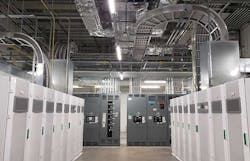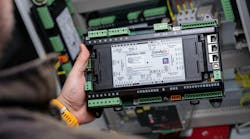In this edition of Voices of the Industry, Herman Chan, President of Sunbird Software, discusses DCIM’s progress and the key differentiators that set second-generation DCIM software apart from legacy data center management tools.
Herman Chan, President of Sunbird Software
We have all seen the rise and fall of Data Center Infrastructure Management (DCIM) software over the past several years. As recently as just a couple of years back, DCIM software was firmly entrenched in disappointment. Early adopters had found that the wide range of initial DCIM software solutions did not deliver as promised. They were difficult to use and slow to deploy. They performed poorly and did not scale for modern data center environments. Perhaps one of the biggest challenges facing enterprises was that early DCIM tools were often modularized, creating additional buying and deployment challenges.
Modern data center management software has progressed far beyond those initial DCIM solutions. Driven by changing market conditions, modernized data center environments with smart devices and instrumentation, and improvements in the software itself, DCIM addresses many of the challenges of its legacy counterparts while meeting the requirements of today’s data center environments.
Crossing the Data Center Software Chasm
DCIM software is slowing crossing the data center software chasm due largely to the state of data centers today.
Data centers are changing. Increased deployments of intelligent PDUs and other smart devices has resulted in increased instrumentation across the data center, with more sensors collecting more data that needs to be analyzed. Data centers are also becoming progressively denser and diversified to handle the massive volume and variety of data that enterprises need to support across different locations.
More workloads are moving off-premises to take advantage of cost-effective cloud and colocation options. Consolidation and virtualization are creating increasingly complex data centers. Finally, users have learned from their earlier experiences with data center tools and now have a better idea of their use cases and what they want in data center software.
All these factors have given rise to a new class of data center management tool: second-generation DCIM software.
What Is Second-Generation DCIM?
Second-generation DCIM refers to the class of software emerging from traditional DCIM products as DCIM crosses the chasm. This new generation of DCIM addresses many of the pain points experienced with legacy DCIM and provides specific capabilities designed to help modern data center managers make smarter operational decisions. Second-generation DCIM combines enhanced versions of the monitoring and operations features available in legacy DCIM tools with new functionality and usability enhancements for modern data center environments:
- Zero-configuration analytics. Most data centers do more than store and process data; they also generate it. Second-generation DCIM software stores and collects data generated by the devices and sensors in your data center. It displays this information in out-of-the-box data center business intelligence dashboards and reports, without the need for separate data analysis tools.
- Data sharing and collaboration. Many teams may work in the same data center, but few actually collaborate and share data. Second-generation DCIM breaks down the silos created by traditional data center management practices that separate the data center, power, network, facilities, and other teams through dashboards and personalized views that encourage information sharing.
- Automation through integration. Most organizations use several disparate systems, like CMDBs and BMSs, to manage different aspects of their data centers. Second-generation DCIM saves time and simplifies data sharing and connections across disparate databases through automatic integration with your existing systems.
- Multi-vendor compatibility. Modern data center environments contain a range of devices from different manufacturers. Second-generation DCIM can manage all these different devices so enterprises aren’t locked in to a specific vendor.
- Super-fast deployments. Unlike its first-generation counterpart, second-generation DCIM can be rapidly deployed with fewer dedicated resources.
- Scalability. Modern data center environments can include thousands of devices and hundreds of thousands of sensors. Second-generation DCIM scales to handle all of these data sources without additional software licenses.
- Completeness of capabilities. Early attempts at DCIM software typically cover one or two components of data center management at a basic level, with additional functionality added on (and paid for) separately. Second-generation DCIM covers all major aspects of data center management, without the need to purchase additional modules.
Early attempts at data center management software did not provide the speed, scalability, ease of use, completeness of features, interoperability, and granular analytics required for modern hybrid data center environments. Today’s data center managers need second-generation DCIM software that addresses their most common use cases while also leveraging new technology to maintain uptime, drive efficiency, and boost productivity.
Bringing It All Together
Thanks to market consolidation, data center modernization, and technology innovation, the DCIM industry has experienced significant shifts and improvements over the past decade. The result is second-generation DCIM software that is faster to deploy, easier to use, and more complete than any legacy data center management solution.
Looking ahead as DCIM software matures and progresses, we expect DCIM adoption to increase significantly. No longer limited to basic data center asset management or power monitoring, today’s data center managers have moved beyond Excel, Visio, and traditional tools to embrace more comprehensive solutions designed for modern data center environments.
Herman Chan is President of Sunbird Software.


